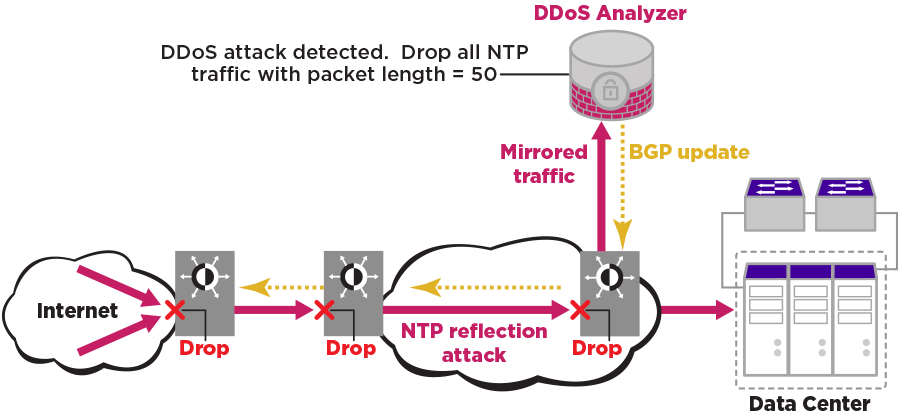BGP Flowspec
BGP flow specification (flowspec) enables a device to instruct BGP neighbors to apply a specific traffic policy or flowspec rule. Neighbors, at their discretion, can apply the policy to take a particular action on traffic or to filter, for example, distributed denial of service (DDoS) attacks.

Note
Only non-VPN IPv4 BGP flowspec is supported (in both default and non-default VRFs).A traffic policy that an IP router uses to forward traffic consists of match criteria and corresponding actions. Match criteria operate on different fields in a packet such as source or destination IP prefixes, IP protocol, and transport-layer port numbers. The corresponding actions can be tasks such as rate limit, filter, and redirect.
BGP flowspec is an n-tuple that consists of a number of matching criteria that define an aggregate IP traffic flow specification. The associated set of actions are advertised by using BGP.
- draft-ietf-idr-bgp-flowspec-oid-06: Revised Validation Procedure for BGP Flow Specifications
- draft-ietf-idr-flowspec-redirect-ip-02: BGP Flow-Spec Redirect to IP Action
BGP flowspec can be applied to DDoS attack filtering. Traditional methods of filtering DDoS attacks include advertising a black hole route to the destination under attack and advertising the destination under attack with a special community that sets the nexthop to a discard nexthop. The disadvantages of traditional approaches include a lack of granularity and the mixing of routing and filtering information. BGP flowspec facilitates a more granular approach to DDoS attack filtering, allowing you to propagate policies that filter and police DDoS attacks in a service-provider environment where mitigation points may be in different autonomous systems.

In the figure, the DDoS Analyzer identifies the threat and generates the filter and corresponding actions according to the flowspec rules. The DDoS appliance then sends out the filter and policing function information as BGP network layer reachability information (NLRI).
Alternatively, you can use the CLI to configure the policy in one of the BGP speakers, such as a route reflector, for propagation to other BGP peer devices.

